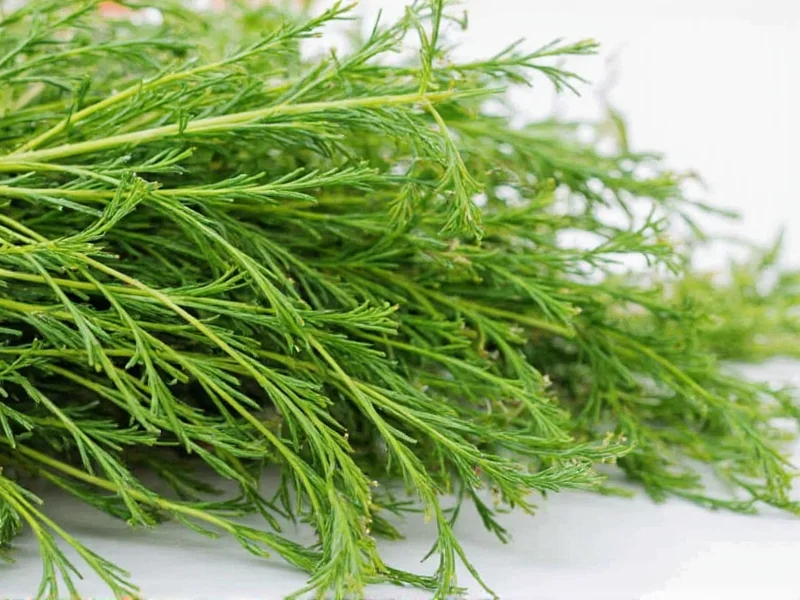Drying dill preserves its distinctive flavor for year-round culinary use while maintaining most of its aromatic compounds. Whether you've harvested an abundant garden crop or purchased a surplus from the market, proper drying techniques ensure you capture dill's unique tangy profile for soups, pickles, and sauces. This comprehensive guide covers all proven methods to dry dill effectively while preserving maximum flavor and color.
Comparing Dill Drying Methods
| Method | Time Required | Flavor Retention | Best For |
|---|---|---|---|
| Dehydrator | 1-3 hours | Excellent (90-95%) | Large harvests, consistent results |
| Oven Drying | 2-4 hours | Good (80-85%) | Urgent preservation, small batches |
| Air Drying | 1-2 weeks | Fair (70-75%) | Traditional method, no equipment |
| Micro drying | 3-5 minutes | Poor (60-65%) | Emergency drying, minimal flavor |
Preparing Dill for Drying
Harvest dill in the morning after dew evaporates but before midday heat when essential oils peak. Select vibrant green fronds without yellowing. Gently rinse stems under cool water and shake off excess moisture. Pat dry with clean kitchen towels—never skip this step as residual moisture causes mold during drying. Remove thick woody stems but keep smaller branches intact for better airflow. For optimal results when learning how to dry fresh dill weed, bundle 5-6 stems together with twine, ensuring leaves don't overlap.
Drying Methods Explained
Dehydrator Method (Best Results)
Arrange dill bundles upside down or spread individual sprigs on dehydrator trays. Set temperature to 95°F (35°C)—higher heat destroys volatile oils. Check after 60 minutes; most dill dries completely in 90-120 minutes. Properly dried dill crumbles easily between fingers. This method delivers superior flavor retention for drying dill for long term storage. Rotate trays periodically for even drying, especially with larger harvests.
Oven Drying Technique
Preheat oven to its lowest setting (170°F/75°C). Place dill on parchment-lined baking sheets without crowding. Prop oven door open 2-3 inches using a wooden spoon. Check every 30 minutes, rotating pans for even exposure. Total drying time ranges 2-4 hours depending on moisture content. Oven drying works well for how to dry out dill when immediate preservation is needed, though flavor diminishes slightly compared to dehydrator methods.
Traditional Air Drying
Hang dill bundles upside down in a dark, well-ventilated space with 40-50% humidity. An unused closet or basement corner works perfectly for air drying dill vs oven drying comparisons. Cover bundles loosely with paper bags to prevent dust accumulation while allowing airflow. Complete drying takes 7-14 days. Check periodically by rubbing leaves between fingers—they should feel papery and brittle. This method preserves adequate flavor for everyday cooking uses.
Proper Storage of Dried Dill
Store completely cooled dill in airtight glass containers away from light and heat. Oxygen absorbers extend shelf life significantly. For how long does dried dill last, properly stored dill maintains peak flavor for 6-12 months. Check for moisture by placing a dry spoon in the container—condensation indicates improper drying. Label containers with harvest and drying dates to track freshness. Never store dried dill near spices with strong odors as it readily absorbs surrounding aromas.
Using Dried Dill in Cooking
Reconstitute dried dill by soaking 1 teaspoon in 2 tablespoons warm water for 10 minutes before adding to cold dishes. For hot preparations like soups or stews, add dried dill 10-15 minutes before serving to preserve flavor. Remember that dried dill measurements require adjustment—use one-third the amount of dried dill compared to fresh in recipes. Dried dill works particularly well in pickling brines, potato salads, and fish dishes where its concentrated flavor shines.
Common Drying Mistakes to Avoid
- Drying at temperatures above 100°F (38°C) which destroys essential oils
- Skipping the pre-drying pat dry step leading to mold development
- Storing before dill reaches complete brittleness causing spoilage
- Using plastic containers that trap moisture instead of glass
- Drying in direct sunlight which fades color and degrades flavor
Frequently Asked Questions
How do I know when dill is properly dried?
Properly dried dill becomes brittle and crumbles easily when rubbed between your fingers. Stems should snap cleanly rather than bend. If any moisture remains, the dill will feel leathery or flexible. Complete drying typically takes 1-2 hours in a dehydrator, 2-4 hours in an oven, or 7-14 days when air drying.
Can I dry dill flowers for seed collection?
Yes, allow dill flowers to mature on the plant until seed heads turn brown. Cut entire seed heads and place in paper bags to catch falling seeds as they dry. Store dried dill seeds in airtight containers away from light. Properly stored dill seeds maintain viability for planting or culinary use for 3-5 years.
Does dried dill lose its flavor over time?
Dried dill gradually loses potency but maintains usable flavor for 6-12 months when stored properly in airtight, light-proof containers. After one year, flavor diminishes significantly though it remains safe to consume. For best results when learning how to dry out dill for long-term use, add oxygen absorbers to storage containers and keep them in a cool, dark place.
What's the best way to dry dill for pickling?
For pickling applications, use the dehydrator method at 95°F (35°C) to preserve maximum flavor compounds. Dried dill retains more consistent flavor in vinegar solutions compared to fresh dill, which can become overly potent. Use 1 teaspoon dried dill per quart of pickling solution as a starting point, adjusting to taste. Properly dried dill maintains its structure better during the pickling process.
Can I dry dill in the microwave?
While possible, microwave drying produces inconsistent results and often burns delicate dill fronds. If attempting this method for how to dry out dill quickly, use 30-second intervals on low power with paper towels between layers. Most culinary experts recommend dehydrator or oven methods instead, as microwaving destroys up to 40% of essential oils compared to gentler drying techniques.











 浙公网安备
33010002000092号
浙公网安备
33010002000092号 浙B2-20120091-4
浙B2-20120091-4